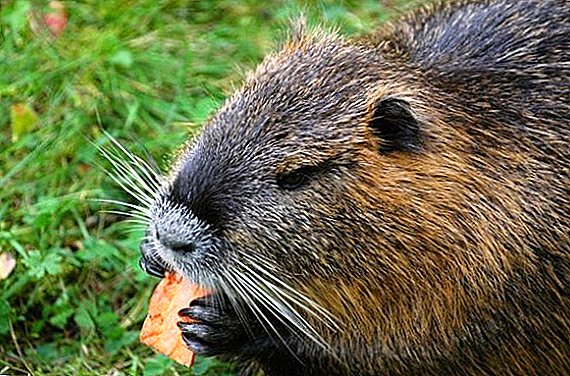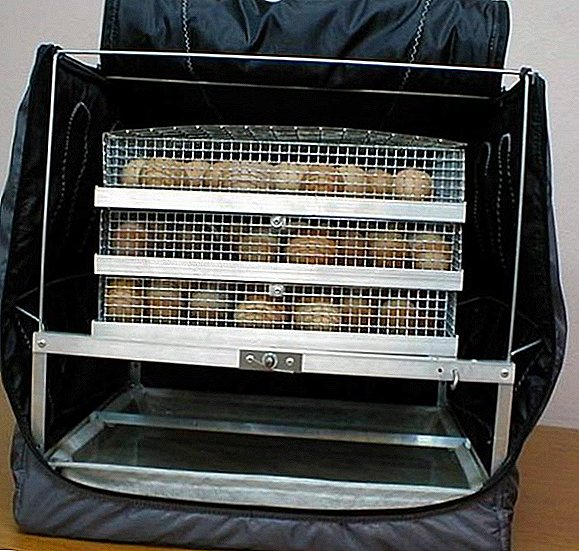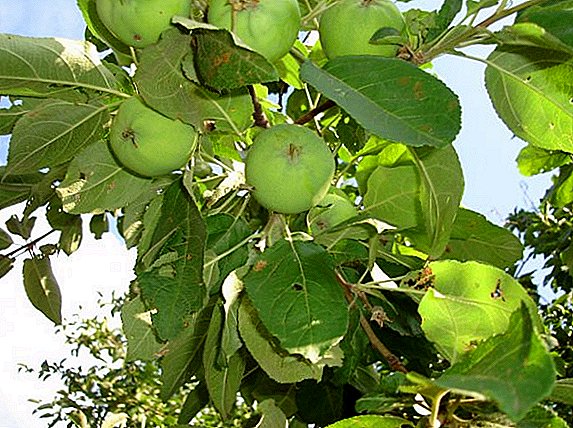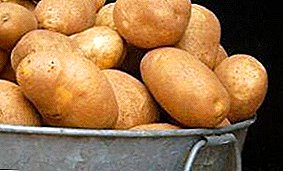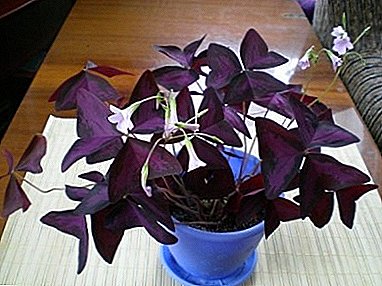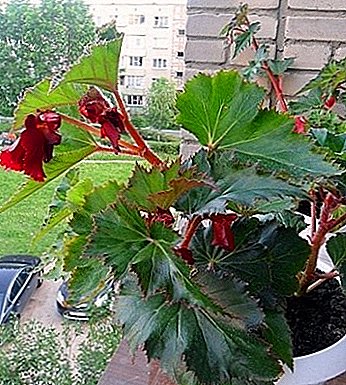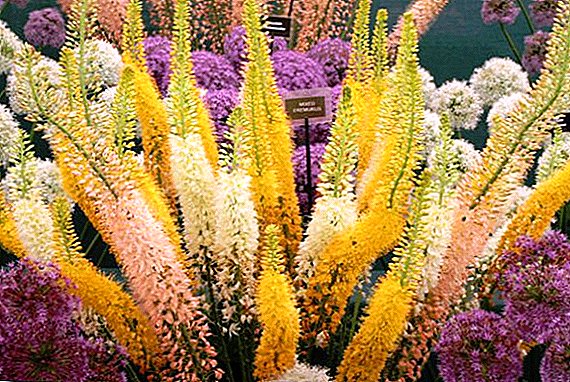 High Eremurus comes from Asia, but successfully caught on our open spaces and fell in love with our gardeners. About planting, the characteristics of growing and caring for a flower in the open field - we will tell further (based on the above photos, you can judge the use of plants in landscape design).
High Eremurus comes from Asia, but successfully caught on our open spaces and fell in love with our gardeners. About planting, the characteristics of growing and caring for a flower in the open field - we will tell further (based on the above photos, you can judge the use of plants in landscape design).
Description
Eremurus is a perennial herb native to Asia. It has short, powerful and thick roots. Leaves a bit, they all grow near the roots and not higher. Stem - straight, without leaves, on it is a brush with flowers.
It is very large, about a meter long, and the flowers themselves are small and bell-shaped. All of them have a wide range of colors: from white to brown. Flowering begins at the bottom and spirals up.
Each flower is in the open state for about a day. Last flowering up to 40 days. 
Did you know? The name "Eremurus" is derived from the Greek words "desert" and "tail." And indeed these plants look like tails of unknown animals. The word “Shiryash” (the second name of the flower) comes from Asia and means “glue”. The fact is that the locals used the roots of the plant for making glue.
Growing conditions
Eremurus is not too picky in relation to the place of growth. But some features still worth considering.
Shine
The plant prefers a lot of sunlight. Therefore, the area with Eremurus should be in direct sunlight. Shaded areas should be avoided.  Shiryash shelter is not required. He very steadfastly endures almost all impulses, so one should not be afraid that his tall stems bend under them.
Shiryash shelter is not required. He very steadfastly endures almost all impulses, so one should not be afraid that his tall stems bend under them.
The soil
Eremurus does not require a special composition of the soil for its growth. It will take root perfectly on any type of land - both neutral and sour. But it grows particularly well on a mixture of loam and peat.
A prerequisite for the successful growth of Eremurus is drainage. Without this, it will not be possible to provide high-quality watering, without stagnant water at the roots of the flower.
On poor soils, flowering will begin 1-2 years earlier than on well-fertilized. Just on fertile soil, a young plant will first grow green mass.
Did you know? Dry roots of the described plant are used as raw materials for creating peculiar patches.

Growing Eremurus seed
Growing Shiryash with seeds is a rather long and difficult process. But if difficulties do not frighten you, then the following information will definitely come in handy.
Growing seedlings
Sowing on seedlings begin in the fall in greenhouses or boxes. The depth of the box should be at least 15 cm. The optimum temperature for shiryasha seedlings is +15 ° C.
The first shoots appear within two years after sowing. Young plants need more abundant and frequent watering than adults.
After the seedlings gained strength, they can be planted in separate pots and grown further in the open air. For overwintering, pots of plants are covered with a layer of leaves, compost, peat (at least 20 cm). In the spring, this layer is removed as soon as the frosts stop.
Thus, the seedlings are grown for three years, and then planted in open ground.
Planting in open ground
Planting seedlings of eremurus flower in the ground is carried out in September and October.
Important! If your site has a high level of groundwater, you will have to make high beds for Eremurus to ensure water drainage.
Carefully place the Shiryash root in the hole for planting (do not damage the thin roots) and cover with the ground. The soil layer above the root should be 5-6 cm. After that the flower can be watered.
It is necessary to maintain a distance of 40 cm between plants. The interrow distance is 70 cm. You will see flowers on new plants 4-5 years after planting. 
Plant Care
The plant does not require special care, but some knowledge is still needed.
Watering and soil care
Watering is needed to start flowering. If the weather is rainy and natural moisture is enough, additional moisture is not required.
But here it is necessary to be careful - abundant watering, especially without drainage, will lead to stagnation of water and rotting of the plant. After the flower has bloomed, watering can stop.
An important procedure is loosening. It removes excess moisture and opens air access to the roots. Loosening can be combined with weeding and remove weeds, spoiling the aesthetic appearance of the flowerbeds.
While performing these procedures, try not to overdo it and do not damage the Shiryash roots - they are very fragile and tender. 
Fertilizer
Another important procedure - plant nutrition. It involves the introduction of 30-40 g / m² of superphosphate before frosts; in March-April, you can feed the flowers with complex fertilizer based on the norm of 40-60 g / m² and compost or humus (approximately 5-7 kg per 1 square meter).
If the soil is poor in nutrients, add 20 g / m² of ammonium nitrate before flowering. However, it is not necessary to “overfeed” the shiryash with nitrogen and manure, since the plant will grow on them and will not have time to prepare for winter.
Protection against diseases and pests
The most frequent pests found in eremurus are aphids and thrips. Succulent stems also attract slugs that tend to feast on their juice. Roots can suffer from mice and moles.
To fight insects, use ordinary garden insecticides (for example, Aktara, Bi-58 New). It’s better to fight slugs by hand.
Important! If the invasion of slugs can not be stopped, use the bait in the form of plaochek with dark beer.
 Mice and moles can damage the roots either while digging their moves and holes, or they can watch them as a treat. Protection from rodents is the ash, which you need to handle the damaged root system.
Mice and moles can damage the roots either while digging their moves and holes, or they can watch them as a treat. Protection from rodents is the ash, which you need to handle the damaged root system.Of the diseases most dangerous fungi (rust) and viruses.
Fungal diseases appear from excessive moisture. Therefore, the first method of prevention is to comply with the irrigation regime. If the disease does appear, it must be treated with fungicides (for example, "Skor", "Topaz").
The virus can not be cured. The cause of this disease are insect pests. Therefore, do not neglect the destruction of aphids and thrips.
Vegetative reproduction
In addition to planting with seeds, shiryash multiplies by dividing rhizomes. This operation takes place from August to September. Kornedonets dig, dried and separated daughter processes.
Further, the obtained parts can be planted in the usual way: in well-drained soil, at a distance of 40-50 cm from each other. 
Preparing Eremurus for Winter
Eremurus tolerates winter well, so only heat-loving species should be harboring. Sketch on top of the manure, peat and spruce branches, which will ensure the delay of snow.
Thus, the plants overwinter beautifully. Young roots should not be stored until spring. It is better to plant them immediately in the fall and cover them with peat and spruce branches.
Shelters dismantle when the weather is warm and the plants start growing. A tall and beautiful plant will decorate your garden and will not require much attention. In addition, such a good honey plant can also help you in the production of unusual honey for our edges.


